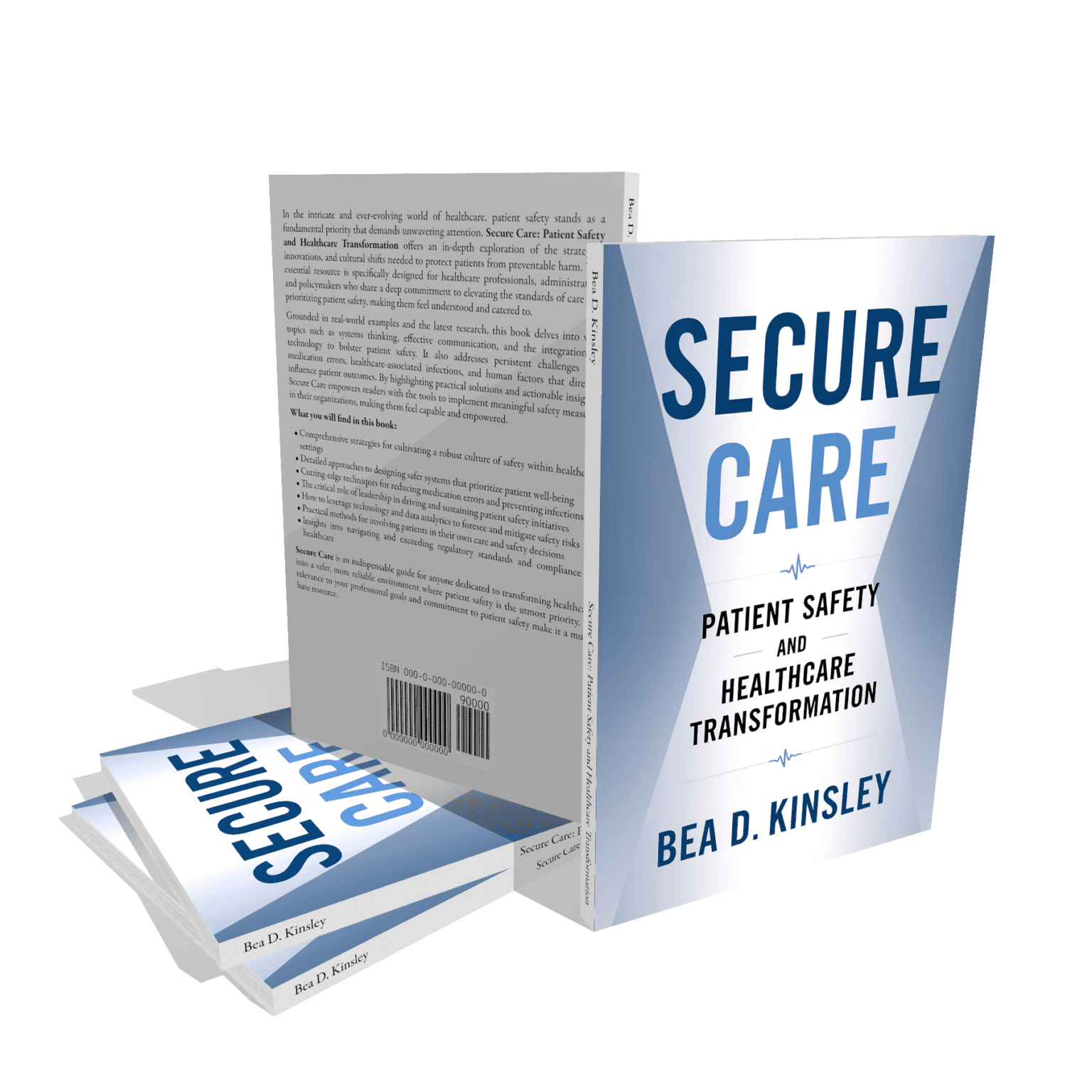Secure Care Patient Safety and Healthcare Transformation – Complete Guide to Medical Safety Excellence

Patient safety transformation begins with understanding how secure care practices can revolutionize healthcare outcomes. Healthcare professionals and administrators face mounting pressure to reduce medical errors while improving patient satisfaction and regulatory compliance. This comprehensive ebook addresses the critical gap between current safety practices and the excellence required for modern healthcare transformation.
Written for healthcare leaders, safety officers, and medical professionals, this guide provides evidence-based strategies for building robust safety cultures that protect patients while enhancing operational efficiency. Unlike generic safety manuals, this book combines practical implementation with systems thinking to create lasting healthcare transformation through secure care practices.
What You’ll Discover
- Safety Culture Development: Master the essential elements of building a patient-centered safety culture that reduces medical errors and improves outcomes
- Patient Engagement Strategies: Learn proven techniques for empowering patients as active participants in their care to enhance safety and satisfaction
- Communication Excellence: Discover how effective teamwork and communication strategies eliminate dangerous miscommunications and prevent adverse events
- Technology Integration: Overcome implementation challenges while leveraging electronic health records and safety systems for maximum patient protection
- Risk Management Systems: Transform your approach to medication management, infection control, and human factors analysis for comprehensive safety
- Continuous Improvement: Implement sustainable practices that create ongoing healthcare transformation through systematic safety enhancements
Why This Book Matters
Healthcare transformation demands more than good intentions—it requires systematic approaches to patient safety that address root causes of medical errors. This book bridges the gap between theoretical safety concepts and practical implementation, providing healthcare professionals with actionable strategies for creating secure care environments. The evidence-based methodologies outlined here have proven effective in reducing healthcare-associated infections, medication errors, and communication breakdowns.
What sets this guide apart is its focus on sustainable transformation rather than quick fixes. By addressing human factors, regulatory compliance, and systems thinking, readers gain comprehensive tools for building safety cultures that protect patients while improving operational efficiency and staff satisfaction.
Key Features
This comprehensive ebook spans multiple chapters covering patient engagement, safety culture development, technology integration, and continuous improvement strategies. Available as an instant digital download, you’ll receive immediate access to implementation frameworks, assessment tools, and practical checklists for immediate application. The format allows for easy reading on any device, with printable resources for team training and policy development. Also available as audiobook on Google Play Books and Spotify for convenient listening during commutes or while exercising, making professional development accessible anywhere.
Frequently Asked Questions
How can this patient safety guide help reduce medical errors in my healthcare facility?
This comprehensive guide provides proven strategies for identifying and eliminating common sources of medical errors through systematic safety culture development, enhanced communication protocols, and technology integration. Healthcare professionals learn practical tools for medication management, infection control, and human factors analysis that directly impact error reduction and patient outcomes.
What makes this healthcare transformation approach different from standard safety training programs?
Unlike generic safety programs, this book emphasizes systems thinking and sustainable culture change rather than compliance-only approaches. The evidence-based strategies focus on patient engagement, team communication, and continuous improvement practices that create lasting transformation rather than temporary fixes. Healthcare leaders gain tools for building safety cultures that engage every team member.
Is this secure care methodology suitable for smaller healthcare practices or only large hospital systems?
The scalable frameworks presented work effectively for healthcare organizations of all sizes, from small clinics to large hospital networks. The book provides adaptable strategies that can be customized based on resources, staff size, and specific patient populations while maintaining focus on core patient safety principles and regulatory compliance requirements.
Get Your Copy Today
Transform your healthcare organization’s safety culture with this comprehensive patient safety guide. Available for instant download at just $6.99, this ebook provides exceptional value compared to expensive safety consulting or lengthy certification programs. Also available as audiobook on Google Play Books and Spotify for convenient learning during busy schedules. Purchase your copy through all major ebook retailers including Apple Books, Barnes & Noble, and Kobo to begin your healthcare transformation journey today.
Watch the Video Review

